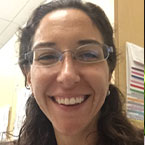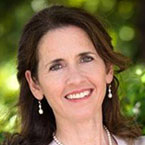By: Alexandra Perkins, MD, MPH, Elizabeth Friedman, MD, MPH, FAAP & Samantha Ahdoot, MD, FAAP
Changes to our
climate and weather patterns are, in turn, changing the kinds of infections and other diseases that make children sick. Read on to learn how, and ways to help reduce the risk from these illnesses.
Changing climate, changing illnesses
When we burn coal, oil and gas for electricity and transportation, pollution is released. This leads to changes like warmer temperatures, more intense rainfall, more powerful
extreme weather events and higher sea levels.
These climate and environmental changes are increasing our exposure to hazards—expanding habitats for
disease-carrying insects like mosquitoes and ticks, for example. They're also increasing the likelihood of water-borne infectious diseases and the growth of toxic algae in waterways.
Scientists and doctors know more about some of these diseases and risks than others, but it's clear that:
Some types of infections are appearing more often or at new times of year with warmer winters, earlier springs and higher temperatures.
Other emerging risks are occurring in new places because of temperature and rainfall changes.
As climate change continues, we need to watch for shifting patterns of diseases.
What new or emerging illnesses related to climate change are making children sick?
We are discovering more unfamiliar hazards and illnesses that were not seen as harmful for children in the past.
Risks and tips: algal blooms
What are algal blooms? Warmer water temperature, water pollution and runoff from agricultural fields help algae grow in bodies of water. With rising temperature,
harmful algal blooms are increasing.
Where are algal blooms found? Harmful algal blooms are found in fresh water and saltwater bodies. All states are affected.
Why are algal blooms harmful? Some algae are toxic. The toxins they release make people and animals sick if they swim in or drink the water, eat fish caught from those waters or inhale toxic air. These toxins also make it harder for public water systems to deliver water that is
safe to drink.
How to keep children safe from algal blooms: Do not swim or let children or dogs play in water with algae. Do not eat fish or shellfish from contaminated water. Follow state and local public health drinking water guidelines, and shellfish and fish advisories. You can report algal blooms to your
local health department.
Risks and tips: mosquitoes
What does climate change have to do with mosquitoes? Warming temperatures help mosquitoes survive and lengthen the mosquito season.
Where are these risks occurring? Some mosquito species live all over the United States, while others live primarily in the South.
Why is this harmful? Mosquitoes carry diseases that cause a range of health problems. For example,
West Nile virus,
chikungunya, Zika and
dengue are viruses spread by mosquitoes. Zika virus can cause birth defects. Dengue causes fever, aches, and rash, or in rare cases, severe bleeding and shock. Chikungunya causes fever, joint pain, neurologic symptoms, and can last for years. The longer season increases the mosquitoes' ability to spread these diseases, especially in northern regions. Some disease-carrying species of mosquitoes are spreading to new places around the world. Thankfully, these diseases very rarely spread in the United States.
How to keep children safe from diseases spread by mosquitoes: Use
insect repellents, wear long sleeves and pants, use mosquito netting on baby strollers and screens on windows and doors. Remove standing water from yards and gardens. Mosquitoes can even breed in very small puddles and drops of water collected in gutters, flowerpots, furniture covers and other places. Never use bug bombs or broad-spraying pesticides. These
insecticides also pose risks to children and are not effective for controlling mosquitoes. Plus, insecticides kill birds and beneficial insects like bees.
Risks and tips: Lyme disease,
Rocky Mountain spotted fever, ehrlichiosis and babesiosis
What does climate change have to do with these diseases? Lyme disease, Rocky Mountain spotted fever, ehrlichiosis and babesiosis are spread by ticks. Due to warmer winters, ticks are moving northward to regions that used to be too cold for them to survive. Their seasons are becoming longer.
Where do the diseases spread? Most commonly in the Eastern and Midwestern United States.
Why is this harmful? Many children develop a rash and/or fever and fatigue after the bite of an infected tick. Later, children with Lyme disease, for example, may have pain in a joint, or rarely, nerve or heart problems.
How to keep children safe from diseases spread by ticks: All of these tick-borne diseases are treated with antibiotics. To avoid tick bites, use insect repellents, and wear long sleeves and pants. Following time in the outdoors, perform
tick checks. Spraying lawns and playgrounds with insecticides does not protect against tick bites. Plus, insecticides kill birds and beneficial insects like bees.
Risks and tips: hand, foot and mouth disease
What does climate change have to do with this disease? This infection is caused by a virus that is sensitive to temperature. Warming temperatures may increase how long the outbreaks last and the risk of infection throughout the year.
Where does it spread? Hand, foot and mouth disease occurs across the country. In the United States, most infections occur in the spring and fall. In tropical countries, the disease spreads year-round.
Why is this harmful? This
common virus causes sores in the mouth and on the skin, typically young children.
How to keep children safe from this disease: Keep affected children
hydrated. They should not attend child care. To prevent the disease from spreading to others, wash hands frequently, especially after diaper changes. If soap and water are not available, use alcohol-based hand sanitizer.
Risks and tips: valley fever (coccidioidomycosis)
What does climate change have to do with valley fever? Drying of soil and dust storms are increasing because of climate change. This may cause more valley fever from inhaled dust containing the
Coccidioides fungus from dry soil. Building on previously undisturbed soils in the desert also has exposed people to coccidioidomycosis.
Where does valley fever spread? Valley fever has historically been seen throughout the Southwest. Recently, it has been found in eastern Washington state.
Why is this harmful? Valley fever causes lung disease. In rare cases, the disease can be severe. Adults are affected more often than children. Adults and children with compromised immune systems are at risk.
How to keep children safe from this disease: Avoid spending time in dusty places if you live in regions with valley fever. Stay away from areas with a lot of disruption of the soil. Remain indoors during dust storms.
Other climate-sensitive infectious diseases:
Gastrointestinal illness, skin infection and sepsis due to
Vibrio species in shellfish occurring further north with warming sea temperatures.
Severe fever, flu-like symptoms, yellow skin (jaundice) and rash due to
leptospirosis after hurricanes and heavy rains.
Diarrhea from infection with Salmonella,
Escherichia coli and
Campylobacter bacteria, which thrive in warmer temperatures.
Skin infection due to bites from a sandfly infected with leishmania parasite.
Severe lung disease caused by contact with rodents infected with hantavirus.
Remember
Talk with your pediatrician if you are concerned that your child's health may be affected by climate change or your child has symptoms of illness. Be sure to mention outdoor activities like camping, hiking or swimmingand any insect bites.
Addressing climate change is a priority to protect every child's health. We all share the same goal to make sure children can grow and thrive.
More information
About Dr. Perkins
 Alexandra Perkins, MD, MPH, is a resident physician at Seattle Children's Hospital. She is founder of Pediatricians for Climate Action, a coalition in Washington state. Dr. Perkins is the trainee liaison for the American Academy of Pediatrics Council on Environmental Health and Climate Change. She has served as program coordinator of Pediatric Environmental Health Specialty Unit Region 10 and two solar energy companies. She earned her MD and MPH in Environmental Health at the University of Washington. Alexandra Perkins, MD, MPH, is a resident physician at Seattle Children's Hospital. She is founder of Pediatricians for Climate Action, a coalition in Washington state. Dr. Perkins is the trainee liaison for the American Academy of Pediatrics Council on Environmental Health and Climate Change. She has served as program coordinator of Pediatric Environmental Health Specialty Unit Region 10 and two solar energy companies. She earned her MD and MPH in Environmental Health at the University of Washington. |
About Dr. Friedman
 Elizabeth Friedman, MD, MPH, FAAP, is the medical director of the environmental health program and physician at Children's Mercy, Kansas City, Mo. She is director of Pediatric Environmental Health Specialty Unit Region 7 and assistant professor at University of Missouri, Kansas City School of Medicine. She is a member of the Medical Society Consortium on Climate and Health steering committee, co-chair of the Academic Pediatric Association Environmental Health, Climate Change and Sustainability Special Interest Group and a co-founder of the Missouri Clinicians for Climate Action.
Elizabeth Friedman, MD, MPH, FAAP, is the medical director of the environmental health program and physician at Children's Mercy, Kansas City, Mo. She is director of Pediatric Environmental Health Specialty Unit Region 7 and assistant professor at University of Missouri, Kansas City School of Medicine. She is a member of the Medical Society Consortium on Climate and Health steering committee, co-chair of the Academic Pediatric Association Environmental Health, Climate Change and Sustainability Special Interest Group and a co-founder of the Missouri Clinicians for Climate Action. |
About Dr. Ahdoot
 Samantha Ahdoot, MD, FAAP, is a practicing pediatrician in Alexandria, Va., and an assistant professor of medical education at University of Virginia School of Medicine. She is a member of the American Academy of Pediatrics (AAP) Council on Environmental Health and Climate Change Executive Committee. Lead author of the AAP policy statement and technical report on global climate change and children's health, Dr. Ahdoot authored a chapter on climate change in the AAP's Pediatric Environmental Health, 4th Ed. She is a member of the board of the AAP Virginia Chapter and chair and founder of Virginia Clinicians for Climate Action. Samantha Ahdoot, MD, FAAP, is a practicing pediatrician in Alexandria, Va., and an assistant professor of medical education at University of Virginia School of Medicine. She is a member of the American Academy of Pediatrics (AAP) Council on Environmental Health and Climate Change Executive Committee. Lead author of the AAP policy statement and technical report on global climate change and children's health, Dr. Ahdoot authored a chapter on climate change in the AAP's Pediatric Environmental Health, 4th Ed. She is a member of the board of the AAP Virginia Chapter and chair and founder of Virginia Clinicians for Climate Action. |
This document was supported in part through cooperative agreement OT18-1802 awarded to the American Academy of Pediatrics and funded by the Centers for Disease Control and Prevention’s National Center for Environmental Health and the Agency for Toxic Substances and Disease Registry. The contents of this publication are solely the responsibility of the authors and do not necessarily represent the official views of the Centers for Disease Control and Prevention or the U.S. Department of Health and Human Services.